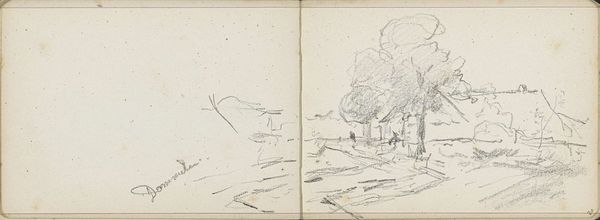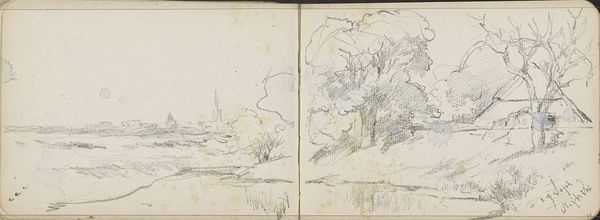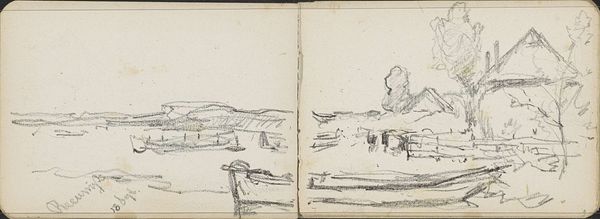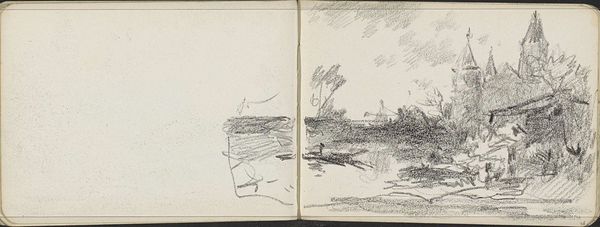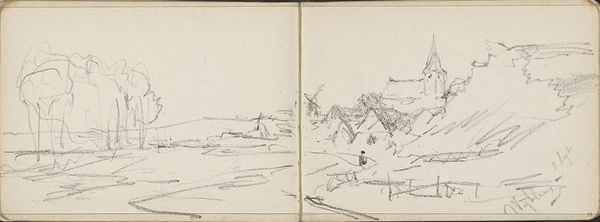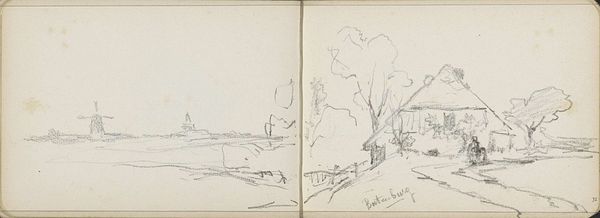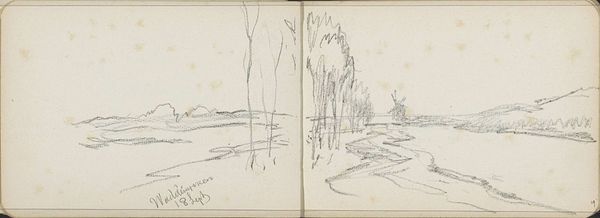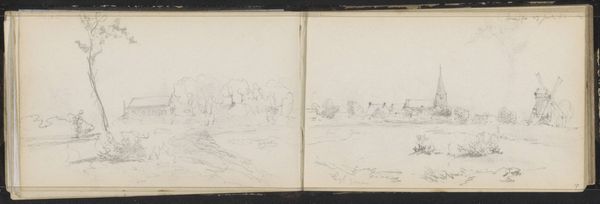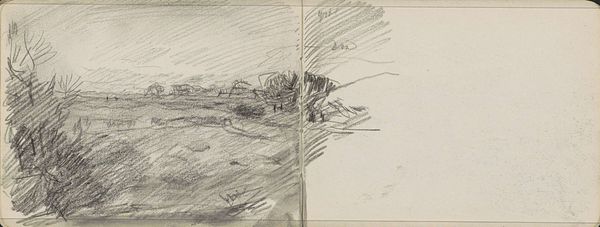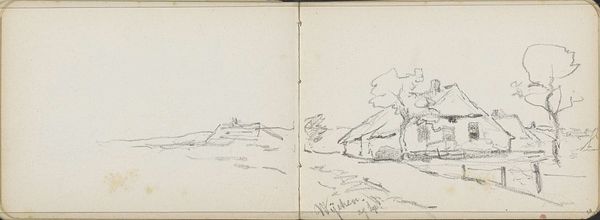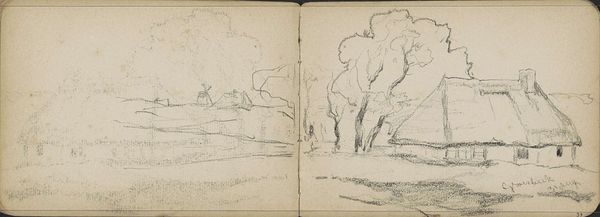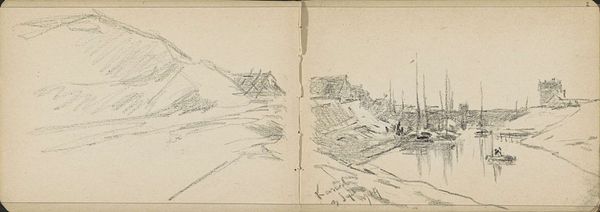
drawing, pencil
#
drawing
#
ink drawing
#
dutch-golden-age
#
pen sketch
#
landscape
#
pencil
#
genre-painting
#
realism
Copyright: Rijks Museum: Open Domain
Editor: This is Willem Cornelis Rip's "Molen aan een waterkant bij Gouda," likely made sometime between 1866 and 1929. It appears to be a double-page pencil and ink drawing. It has a simple, pastoral feel. What strikes you about this sketch? Curator: The sketch invokes a particular historical narrative, doesn't it? Beyond the pleasant imagery, I see the romanticized portrayal of rural life, a narrative carefully constructed often in contrast to rapid urbanization and industrial change. Who is this image *for*, and what is it *doing*? How does the work reinforce—or challenge—ideas of Dutch identity during this period? Editor: That's a perspective I hadn’t considered! So, the seemingly simple subject matter carries a heavier cultural weight. But aren’t windmills a quintessential symbol of Dutch culture? Curator: Precisely! But think about *why* they are symbols. They speak to a legacy of ingenuity in harnessing nature, yet this is a carefully edited landscape. Who is excluded from this idyllic scene? What labor sustains it? And by representing windmills in the countryside, rather than factories in the city, we create a deliberate emphasis. What do we lose sight of when only the windmill is shown? Editor: That makes me rethink the scene entirely. Instead of just seeing a peaceful landscape, I’m now aware of the selection process, what's highlighted, and what's intentionally omitted. I am surprised how much context is wrapped into this innocent-looking sketch! Curator: Absolutely. And this close reading helps reveal the powerful role that art plays in shaping cultural memory and social narratives. It asks us to be active viewers, constantly questioning what we see, and more importantly, what we *aren't* seeing.
Comments
No comments
Be the first to comment and join the conversation on the ultimate creative platform.

